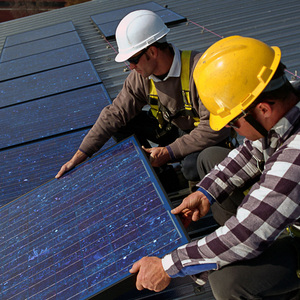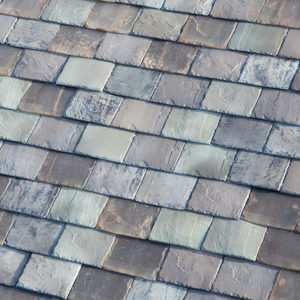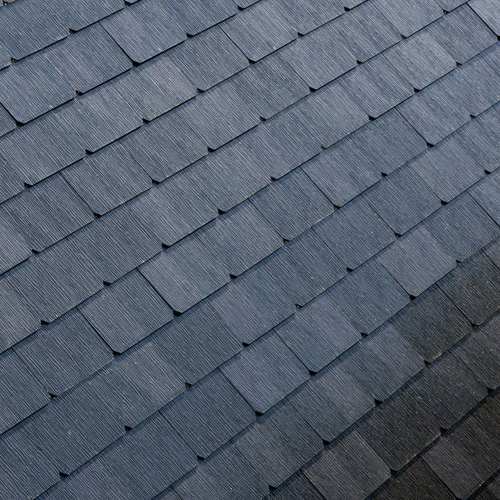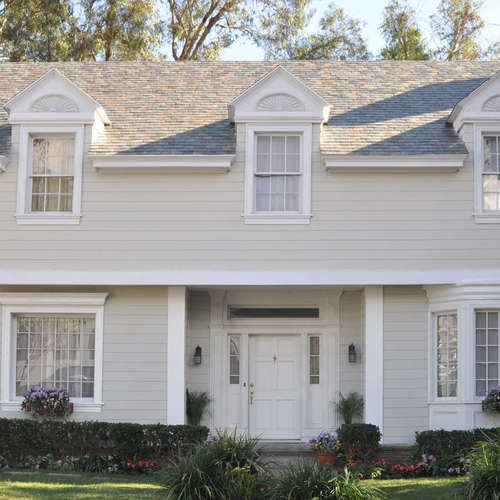
Tesla’s solar roof—the breakthrough that seems perpetually right around the corner—is now in its third and most promising iteration and should be ready for installation in the coming weeks, the company’s CEO says.
In a conference call with reporters late last month, Elon Musk admitted that earlier versions of the long-delayed solar roofing tiles “really didn’t work,” according to an article posted at Quartz. But the newest glass-topped tiles are larger, easier to install, and have higher energy output, Musk said.
“Installations begin next month,” the company said in an Oct. 25 Tweet.
The company hopes to install more than 1,000 roofs per week in the coming months as production of the tiles picks up steam at its Buffalo, New York, factory. Tesla hasn’t offered a firm date on meeting that goal.
Musk first announced the tiles at a press conference in 2016. The building-integrated PV system consists of tiles with a tempered glass top and solar cells below. From an oblique angle, the tiles are designed to look like one of several types of roofing, but from above the glass admits sunlight to generate electricity. Unlike typical racked solar collectors, the solar modules are essentially invisible.
Since the original announcement, and subsequent updates, Tesla has installed very few of the roofs. With a revamped product and simpler installation the company hopes the roofs will be widely available in the coming months, Quartz reported. Tesla originally said the tiles would come in four different versions, but plans now call for a textured black tile to be available first and new variants released every six to nine months after that.
Increasing the size of the tiles is a big part of speeding installation, a key roadblock until now. Older versions of the tiles measured 14 inches by 8.5 inches, but Solar Power World reports that new ones will be 15 inches by 45 inches. Without offering specifics, Forbes said the new tiles also have twice the power density as previous versions.
At its website, Tesla says the tiles are suitable for roofs with a pitch from 2:12 to 20:12. They carry a Class 3 hail rating, will resist winds of up to 130 mph, and have a Class A fire rating.
An order form at Tesla’s website says a 1,209-square-foot roof in Portland, Maine, would cost an estimated $31,805 and have a rated capacity of 11.7 kW (estimates would be firmed up after the order was placed). Installations in the area will begin in 2020.
In a Tweet, Tesla said the latest version of the roof “only takes a few days to set up” and is comparable in cost to a composition shingle roof plus electric bill. In other words, ordering a solar roof should should be a financial wash for homeowners who are already buying a new roof.
A recording of the call has been posted online (which you can access here). In it, the company says the tiles will be available in all 25 states where it now sells conventional solar panels.
Kyle Field of CleanTechnica provides a summary of the public conference call and more of the details about version 3 here. One key to getting its foot in the door will be a decision to open up the installation to traditional roofing companies, what Field calls a “significant change of direction” for the company.
Tesla has yet to respond to an email from GBA with questions. We will update the article when they do.
-Scott Gibson is a contributing writer at Green Building Advisor and Fine Homebuilding magazine.
Weekly Newsletter
Get building science and energy efficiency advice, plus special offers, in your inbox.















10 Comments
I wonder if roofers will now have to be HAZMAT certified so they can remove and dispose of damaged tiles?
No, but they will certainly need to be licensed electricians.
I can't wait to see how the average roofer installs glass tiles.
>"I can't wait to see how the average roofer installs glass tiles."
You mean you can't just trim 'em to fit with a shingling hatchet as you would with cedar? :-)
HAZMAT cert would only be required if there were hazardous materials involved. Live wires don't qualify as a hazardous material, even if they're pretty hazardous.
I was thinking with regards to broken tiles. Solar cells contain heavy metals (lead, cadmium).
I was thinking with regards to broken tiles. Solar cells contain heavy metals (lead, cadmium).
vaporware version 3.x ??
Yeah, and Elon says he's gonna make electric cars. I'll believe that when it happens.
Anyone can build an electric car. The actual test is being able build one profitably.
No one's mentioned one of Elon's early promises, that these solar tile roofs would cost less than a traditional roof.
Traditional roof being the slate or tile roof it's designed to replace and including the cost of the energy generated over the lifespan of the roof, if I remember right. I don't think it's going to beat out asphalt shingles anytime soon...ever...
I believe they still are making that claim.
Log in or create an account to post a comment.
Sign up Log in